VON NEUMANN, John. (1) First draft of a report on the EDVAC . [Philadelphia:] Moore School of Engineering, University of Pennsylvania, June 30, 1945. 4 o. Photostat of original mimeographed typescript, printed on rectos only. Bound with (2) an undated preliminary version of the report and (3) a copy of von Neumann's letter of May 8, 1945, to Herman Goldstine (both photostats of typescripts). Red library buckram. Provenance : Photostats of the copies belonging to Arthur W. Burks who worked on ENIAC and EDVAC, and afterward collaborated with von Neumann on the IAS computer. Burks signed his original copies of both the First Draft and the preliminary version; these signatures are reproduced in the photostats. Stamp of Lawrence Stark, professor of physiological optics at the University of California, Berkeley; Stark received these photostats from Herman Goldstine. Even before the ENIAC was completed members of the Moore School group, including Eckert and Mauchly, recognized the limitations of its programming methodology, which required plugging in patch cords from buses to panels for the solution of each problem. As early as January 29, 1944, Eckert left a memorandum briefly discussing the stored-program concept, which would eventually be realized in a machine to be called the EDVAC. While working on the ENIAC project during the summer of 1944, Goldstine happened to run into von Neumann at a train station. Prior to this Goldstine had attended von Neumann's lectures but they had never met. When Goldstine explained that the machine he was working on would be capable of 333 multiplications per second, von Neumann became intensely interested. "Soon thereafter the two of us went to Philadelphia so that von Neumann could see the ENIAC. At this period the two accumulator tests were well underway. I recall with amusement Eckert's reaction to the impending visit. He said that he could tell whether von Neumann was really a genius by his first question. If this was about the logical structure of the machine, he would believe in von Neumann, otherwise not. Of course, this was von Neumann's first query" (Goldstine, The Computer from Pascal to von Neumann [1972] 182). The United States Army began funding development of the stored-program EDVAC at the Moore School in October, 1944. Von Neumann's First Draft was a product of regular discussions he held with members of the Moore School EDVAC project, including Eckert and Mauchly. Both Von Neumann and Goldstine (who had the typed report prepared from materials sent to him by von Neumann) considered the First Draft to be an internal working paper, unintended for publication. Its purpose, according to Goldstine, was to clarify and coordinate the thinking of those working on the EDVAC project (Goldstine 1972, 196). For this reason neither von Neumann nor Goldstine took care to assign credit for the ideas it contained. Because it was just a working paper and they deliberately avoided the specifics of hardware in order not to compromise the value of the theory, the document was not given a security classification. Von Neumann's idealized computer was composed of six basic units: high-speed memory, a central arithmetic unit, an outside recording medium, an input organ, an output organ, and a central control. These are described in detail in the First Draft, using a quasi-physiological terminology derived from McCulloch and Pitts. The stored-program concept can be found in the repertoire of instructions proposed for EDVAC. Although the Moore School staff's reaction to von Neumann's report was initially favorable, by 1946 the report had become the center of a bitter dispute, one that caused Eckert and Mauchly to sever relations with Goldstine and von Neumann, and led to the breakup of the Moore School computer group. In spite of von Neumann's publication of the theory of the stored-program computer in this privately circulated document, Eckert and Mauchly went ahead and applied for a patent on ENIA
VON NEUMANN, John. (1) First draft of a report on the EDVAC . [Philadelphia:] Moore School of Engineering, University of Pennsylvania, June 30, 1945. 4 o. Photostat of original mimeographed typescript, printed on rectos only. Bound with (2) an undated preliminary version of the report and (3) a copy of von Neumann's letter of May 8, 1945, to Herman Goldstine (both photostats of typescripts). Red library buckram. Provenance : Photostats of the copies belonging to Arthur W. Burks who worked on ENIAC and EDVAC, and afterward collaborated with von Neumann on the IAS computer. Burks signed his original copies of both the First Draft and the preliminary version; these signatures are reproduced in the photostats. Stamp of Lawrence Stark, professor of physiological optics at the University of California, Berkeley; Stark received these photostats from Herman Goldstine. Even before the ENIAC was completed members of the Moore School group, including Eckert and Mauchly, recognized the limitations of its programming methodology, which required plugging in patch cords from buses to panels for the solution of each problem. As early as January 29, 1944, Eckert left a memorandum briefly discussing the stored-program concept, which would eventually be realized in a machine to be called the EDVAC. While working on the ENIAC project during the summer of 1944, Goldstine happened to run into von Neumann at a train station. Prior to this Goldstine had attended von Neumann's lectures but they had never met. When Goldstine explained that the machine he was working on would be capable of 333 multiplications per second, von Neumann became intensely interested. "Soon thereafter the two of us went to Philadelphia so that von Neumann could see the ENIAC. At this period the two accumulator tests were well underway. I recall with amusement Eckert's reaction to the impending visit. He said that he could tell whether von Neumann was really a genius by his first question. If this was about the logical structure of the machine, he would believe in von Neumann, otherwise not. Of course, this was von Neumann's first query" (Goldstine, The Computer from Pascal to von Neumann [1972] 182). The United States Army began funding development of the stored-program EDVAC at the Moore School in October, 1944. Von Neumann's First Draft was a product of regular discussions he held with members of the Moore School EDVAC project, including Eckert and Mauchly. Both Von Neumann and Goldstine (who had the typed report prepared from materials sent to him by von Neumann) considered the First Draft to be an internal working paper, unintended for publication. Its purpose, according to Goldstine, was to clarify and coordinate the thinking of those working on the EDVAC project (Goldstine 1972, 196). For this reason neither von Neumann nor Goldstine took care to assign credit for the ideas it contained. Because it was just a working paper and they deliberately avoided the specifics of hardware in order not to compromise the value of the theory, the document was not given a security classification. Von Neumann's idealized computer was composed of six basic units: high-speed memory, a central arithmetic unit, an outside recording medium, an input organ, an output organ, and a central control. These are described in detail in the First Draft, using a quasi-physiological terminology derived from McCulloch and Pitts. The stored-program concept can be found in the repertoire of instructions proposed for EDVAC. Although the Moore School staff's reaction to von Neumann's report was initially favorable, by 1946 the report had become the center of a bitter dispute, one that caused Eckert and Mauchly to sever relations with Goldstine and von Neumann, and led to the breakup of the Moore School computer group. In spite of von Neumann's publication of the theory of the stored-program computer in this privately circulated document, Eckert and Mauchly went ahead and applied for a patent on ENIA

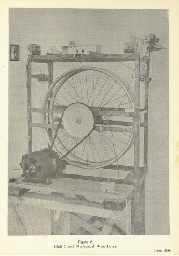
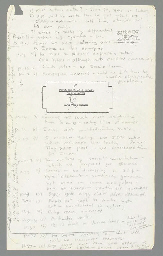

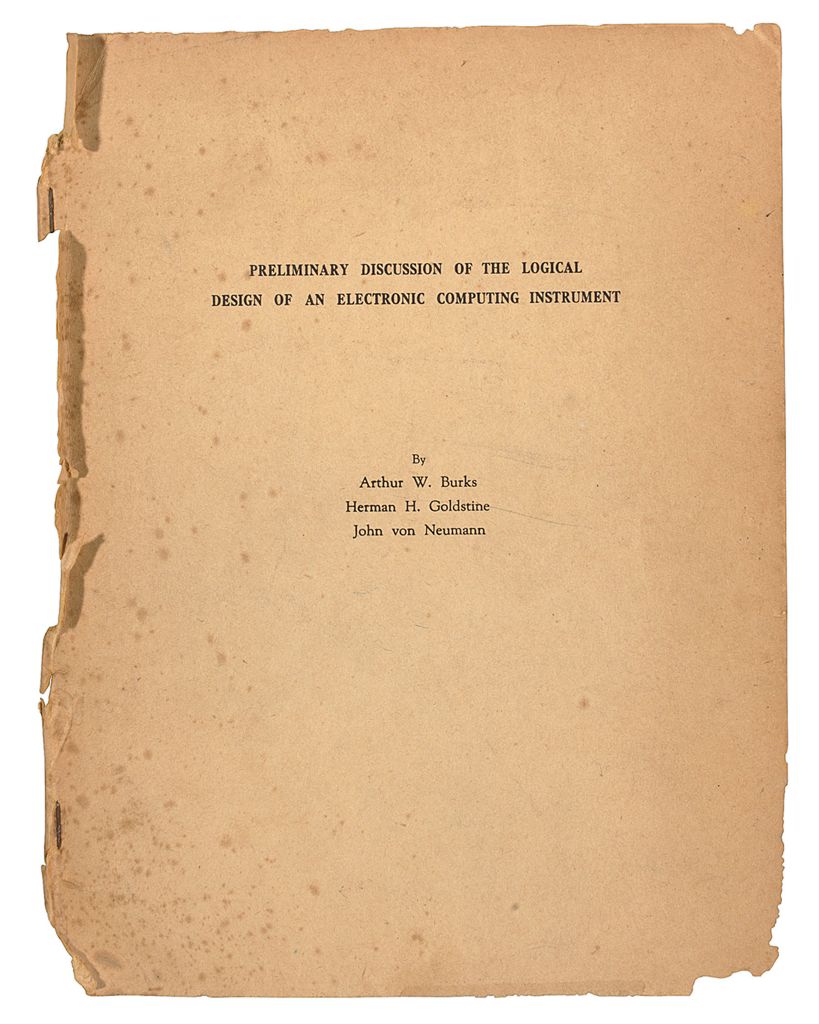
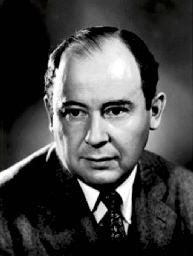
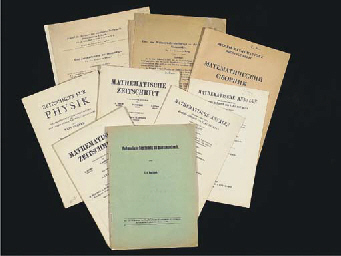

.jpg)






Try LotSearch and its premium features for 7 days - without any costs!
Be notified automatically about new items in upcoming auctions.
Create an alert